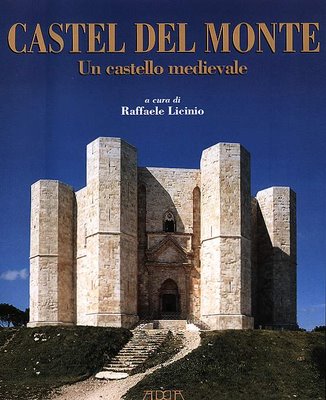
AT Castel del Monte, the stage is set for tragedy or black magic. Clouds scuttle across the sky, and a milk-white full moon rises. Footsteps echo on cold, wheat-colored stone, startling pigeons into flight.
A medieval emperor hunted with falcons and cheetahs here, consulted astrologers and slept on Oriental silk. Local people sought refuge during the plague, and brigands hid out in the castle. Vandals over the years stripped it, leaving little more than an empty shell on a lonely hilltop at the edge of the Murge, a barren-looking limestone plateau worlds apart from the sunny Italian south most people know.
This medieval masterpiece, begun in 1240 — about the same time as Westminster Abbey — has eight sides, linked by eight eight-sided towers. Its seemingly endless repetition of the octagonal form has haunted mathematicians through the ages who see it as a work of pure geometry. The more mystically inclined impute occult significance to this temple of the octagon, noting that great buildings around the world, such as Jerusalem's 1,300-year-old Dome of the Rock, also have eight sides.
Whether icon or equation, the castle has more vibes than "The Da Vinci Code." But Castel del Monte, as silent as a sarcophagus and as strange as a UFO, keeps its secrets, glowing like the crown of its 13th century builder, Holy Roman Emperor Frederick II.
Like England's Richard the Lion-Hearted and saintly Louis IX of France, Frederick was one of the giants of the European Middle Ages, though far more complex than his contemporaries. Cultured and brutal, despotic and enlightened, a Christian crusader who was excommunicated, he left a legacy that historians still debate, including David Abulafia, author of the recent biography "Frederick II: A Medieval Emperor," which seeks to demystify the medieval ruler.
But Frederick's enigmatic aura has proved hard to dislodge. In his time and afterward, he was called stupor mundi (the wonder of the world) and the Antichrist. A 1927 biography of Frederick by German historian Ernst Kantorowicz was a favorite of Hitler, whose delusions of grandeur were fueled partly by the emperor's efforts to consolidate a realm that included Germany, the Netherlands, Austria, Poland, parts of France and Italy, Malta, Cyprus, Israel and Lebanon.
Of all the lands he ruled, he loved low-lying Puglia best, in those days a richly forested region bordered on the east by the Adriatic Sea. Here he built his startling octagonal castle, part hunting lodge, part pleasure palace, part symbol of his might.
Among great architectural ciphers, Castel del Monte stands out for its stubborn unlock-ability, though it is less well known than others chiefly because it is in the relatively untrammeled, ill-reputed Mezzogiorno, at the heel of the Italian boot.

1 comment:
Post a Comment